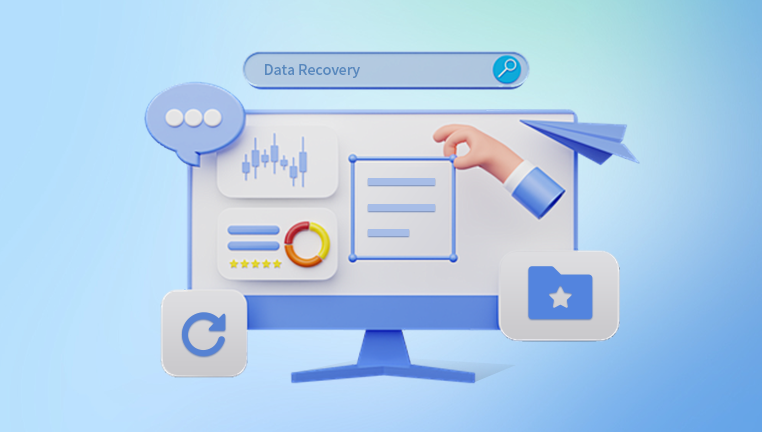Chapter 1: Common Causes of File Loss on Computers
Understanding why files get lost helps you prevent future loss and choose the right recovery method.
1.1 Accidental Deletion
Most files are lost because they were accidentally deleted by users. Sometimes the files are still in the Recycle Bin or Trash, but permanent deletion or emptying these bins makes recovery trickier.
1.2 Formatting or Repartitioning
Formatting a drive or partition removes file system structures and indexes, making files inaccessible though their data may still exist until overwritten.

1.3 Virus or Malware Attacks
Malicious software can delete, encrypt, or hide files, sometimes demanding ransom or causing permanent data loss.
1.4 Software Crashes or System Failures
Operating system crashes or software bugs can corrupt files or disrupt save operations.
1.5 Hard Drive or SSD Failures
Physical problems like bad sectors or mechanical failure on hard drives, or firmware corruption in SSDs, can make files inaccessible.
1.6 Power Failures
Sudden shutdowns during file operations can corrupt files or cause data loss.
Chapter 2: Immediate Steps to Take When You Lose Files
2.1 Stop Using the Computer Immediately
Continued use risks overwriting lost files, making recovery impossible.
2.2 Check Recycle Bin or Trash
Deleted files often stay here unless permanently deleted.
2.3 Search for Hidden or Moved Files
Files may have been moved or hidden accidentally.
On Windows, enable "Show hidden files" in File Explorer options.
On Mac, press Command + Shift + Period to toggle hidden files.
2.4 Use System Restore or File History
Windows users can check if File History or Previous Versions are enabled.
Mac users can use Time Machine backups.
Chapter 3: Recovering Lost Files Using Built-In Operating System Tools
3.1 Recovering Files from Recycle Bin or Trash
The first and easiest step is to look here.
Open Recycle Bin or Trash.
Right-click the file(s) and choose “Restore” or drag back to the original location.
3.2 Using Windows File History or Previous Versions
If File History is enabled:
Right-click the folder that contained the lost files.
Select "Restore previous versions."
Choose a version and click "Restore."
3.3 Using macOS Time Machine
If Time Machine backup exists:
Open Finder to the folder where files were lost.
Enter Time Machine from the menu.
Browse backups and restore files.
3.4 Using Command Prompt or Terminal for Hidden Files
On Windows, use:
cmd
CopyEdit
attrib -h -r -s /s /d X:\foldername\*
Replace X:\foldername with your path.
On Mac, use:
bash
CopyEdit
chflags nohidden /path/to/folder
Chapter 4: Using Data Recovery Software
Drecov Data Recovery offers a reliable and easy-to-use solution to help you recover lost files quickly and securely.
How Drecov Data Recovery Works:
Easy Installation and Setup: After downloading Drecov Data Recovery, install it on a different drive than the one where files were lost to avoid overwriting data. Launch the software and select the drive or partition where your files were stored.
Flexible Scan Options: Drecov Data Recovery provides both quick scans to find recently deleted files and deep scans to recover files lost due to formatting, corruption, or system crashes. This flexibility ensures thorough scanning tailored to your situation.
Wide File Format Support: The software supports recovery of a broad range of file types, including documents, images, videos, audio files, and archives, making it suitable for most users’ needs.
File Preview and Selective Recovery: Panda allows you to preview recoverable files before recovery, helping you select only the files you want to restore. This saves time and storage space.
Safe Recovery Process: To prevent data overwriting, recovered files are saved to a separate location from the original storage drive.
Benefits of Using Drecov Data Recovery:
User-friendly interface, perfect for beginners and experts.
Compatible with various storage devices like internal drives, external hard drives, USB sticks, and memory cards.
High recovery success rates even in complex scenarios.
By promptly using Drecov Data Recovery, you can maximize your chances of restoring lost files and minimize data loss impact.
Chapter 5: Recovering Lost Files from Specific Scenarios
5.1 Recovering Deleted Files
Use software scans or Recycle Bin.
5.2 Recovering Files After Formatting
Use deep scan features; avoid writing to the drive.
5.3 Recovering Files from Corrupted Drives
Run CHKDSK on Windows:
cmd
CopyEdit
chkdsk X: /f /r
Use software with RAW recovery options.
5.4 Recovering Files from External Drives and USBs
Connect the drive directly, avoid unsafe ejection.
Chapter 6: Advanced Recovery Techniques
6.1 Partition Recovery
Software like R-Studio can restore lost or deleted partitions.
6.2 RAID Recovery
Advanced software can recover files from RAID arrays.
6.3 Using Hex Editors and Manual Reconstruction
For tech-savvy users to manually reconstruct files.
Chapter 7: Preventing Future File Loss
7.1 Regular Backups
Use cloud storage, external drives, or NAS.
7.2 Use Reliable Hardware
Invest in quality drives, replace old ones.
7.3 Use Antivirus Software
Protect against malware.
7.4 Practice Safe Usage
Avoid sudden shutdowns, safely eject drives.
7.5 Enable System Protection Features
Turn on File History, Time Machine, or equivalent.
Chapter 8: Frequently Asked Questions (FAQs)
8.1 Can I recover files after emptying the Recycle Bin?
Yes, with recovery software if data isn’t overwritten.
8.2 How do I avoid overwriting lost files?
Stop using the affected drive immediately.
8.3 Is data recovery software safe?
Yes, from reputable sources and when used properly.
8.4 How long does recovery take?
Depends on disk size, scan depth, and file quantity.




